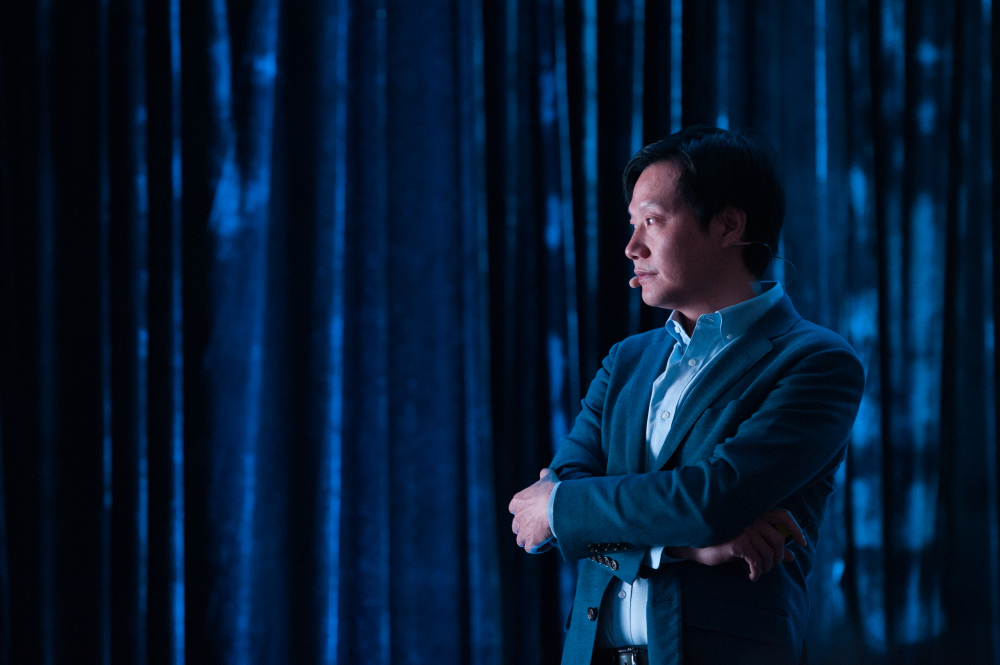36Kr has learned that Wang Naiyan, the former CTO of TuSimple China, will be joining Xiaomi Auto, reporting to Ye Hangjun, chairman of Xiaomi’s technical committee and head of Xiaomi Auto’s autonomous driving division.
36Kr confirmed this news with relevant personnel from Xiaomi.
Previously, Wang led the R&D and management at TuSimple China, responsible for developing and implementing Level 2 assisted driving and Level 4 autonomous driving solutions. Wang graduated from the Hong Kong University of Science and Technology (HKUST), specializing in deep learning. He was a core developer of the deep learning open source framework MXNet and has published over 40 papers in top-tier conferences and journals in computer vision and machine learning.
Wang’s addition is a significant signal of Xiaomi’s accelerated progress in intelligent driving technology.
Recently, Xiaomi CEO Lei Jun publicly shared that, 43 days after delivery began, Xiaomi SU7’s delivery volume exceeded 10,000 units, with its annual production capacity correspondingly increased to 100,000 units. It took Xpeng Motors and Li Auto seven months to achieve this delivery volume, while Aito took 87 days.

On May 18, Lei made his live stream debut by driving the Pro version of the Xiaomi SU7, showcasing its high speed and urban navigate-on-autopilot (NOA) features. During the live stream, Lei Jun debunked rumors about Xiaomi collaborating with third parties on visual solutions and reiterated Xiaomi’s commitment to developing its own intelligent driving technology.
During the live stream, Lei also twice called for talent, openly asking if there were any top-notch professionals willing to join Xiaomi.
Currently, Xiaomi has invested over RMB 4.7 billion in intelligent driving, with a team of over 1,000 people and a test mileage exceeding 10 million kilometers. Xiaomi has also started rolling out its urban NOA feature to users in ten cities since May.
Xiaomi needs more talent
This is not the first time Xiaomi has sought to attract intelligent driving talent. As early as 2021, when Lei announced Xiaomi’s entry into the automotive industry, Xiaomi acquired autonomous driving technology company DeepMotion for USD 77.37 million. The addition of over 20 core R&D personnel from DeepMotion quickly filled Xiaomi’s ranks, laying the foundation for its R&D talent pool.
Wang’s addition is expected to help Xiaomi achieve further advancements in intelligent driving technology.
A TuSimple R&D personnel told 36Kr that Wang has a comprehensive understanding of intelligent driving technology, covering the domains of perception, planning, and control. He also has unique insights into the currently popular “end-to-end” technology solutions.
End-to-end is a concept in deep learning where an AI model can output final results from raw data inputs.
Tesla pioneered the end-to-end trend in intelligent driving. Elon Musk once said that Tesla’s Beta V12 version of the Full Self-Driving FSD software could take input images and output vehicle control signals such as steering, braking, and acceleration.
Wang has publicly urged not to fall into the narrow interpretation of Tesla’s end-to-end approach. He believes that end-to-end is one of the promising technical routes to solve high-level autonomous driving challenges, though there are still many issues to be resolved before the solution can be implemented.
Specifically, Wang said that the key to the end-to-end concept is the lossless transmission of information, and insisting on fixed signal input and output points will only place unnecessary burdens on the system.
At Xiaomi’s 2024 Investor Day, Lei said that Xiaomi would further increase its investment in intelligent driving. This year, the company’s intelligent driving team will expand to 1,500 people and to 2,000 by 2025, with an annual investment of about RMB 1.5 billion.
The industry’s attitude toward talent has reached a turning point. At Xpeng’s recently concluded Technology Day, He Xiaopeng announced that the intelligent driving team would expand by 4,000 people this year, while Li Auto has recently started layoffs in its intelligent driving team.

With rapid talent mobility, the addition of Wang is just the beginning for Xiaomi’s intelligent driving. With determination and appeal, Lei is likely to quickly catch up in the intelligent driving field.
AI and data key to next phase of intelligent driving
AI and data are becoming crucial in this decisive phase of intelligent driving, beginning with the introduction of large models.
Traditionally, modules such as perception, decision-making, and planning control relied on engineers writing code to set rules, and the effectiveness of intelligent driving depended on the coverage of these rules. This constrained the servable scenarios for intelligent driving.
In 2021, Tesla introduced the Transformer-based bird’s eye view (BEV) technology into the perception field, allowing cameras to transform 2D images into 3D scenes. This enabled intelligent driving to break free from reliance on high-precision maps, marking the entry into the lightweight map era in China’s intelligent driving sector.
Subsequently, the introduction of technologies such as Occupancy Network not only addressed the shortcomings of vision perception in road object depth but also resolved the issue of neural networks needing to recognize before identifying, greatly expanding the boundaries of pure vision solutions.
The combination of Transformer, BEV, and Occupancy has since become a mainstream vision-based solution, and the ability to quickly implement similar technology has become proof of competition for the high ground in intelligent driving technology among domestic manufacturers.
In 2024, after completing the evolution of the perception module, Tesla made a new breakthrough by introducing neural networks into the decision-making, planning, and control fields, delivering an end-to-end large model.
In its latest user manual, Tesla said that “FSD upgrades the urban driving stack to a single end-to-end neural network, trained with millions of video clips, replacing over 300,000 lines of C++ code.”
The application of the end-to-end model allows FSD to transition from its beta version to operating under supervision, thereby making it available to millions of users in North America. The expansion speed, usage range, and user experience of end-to-end solutions in urban NOA have higher ceilings, making it the hottest competition point in the current intelligent driving industry.
Xpeng, which follows a similar route to Tesla, released its Tianji System XOS 5.1 in May 2024. The end-to-end large model, composed of the neural network XNet, the planning and control large model XPlanner, and the large language model XBrain, is aimed at helping Xpeng achieve the ability to drive on every road nationwide in the third quarter of 2024 and achieve a leap in urban intelligent driving in 2025.
Huawei, which follows the light detection and ranging (LiDAR) route, further removed the BEV network in its ADS 3.0, adopting the general obstacle detection (GOD) network for perception and the PDP network for pre-decision planning instead. Huawei, with its inclusion of LiDAR, has achieved more outstanding results in the autonomous emergency braking (AEB) function.
Aiming to enter the leading ranks, Xiaomi demonstrated the application of end-to-end capabilities in parking scenarios at the launch event on March 28. It can currently achieve 5-centimeter precision for parking in extremely narrow spaces and 23 km/h cruising for valet parking.
However, model development is just the beginning. Massive data training is key for end-to-end solutions to function effectively. The popular Aito models are providing Huawei with a constant stream of data, while Xpeng, despite its strong technology, is facing declining sales.
Although Xiaomi’s progress in end-to-end development started later, the sales achievement of its first car surpassing 88,000 units in 33 days, with an 82.39% intelligent driving activation rate, positions Xiaomi as a serious contender.
KrASIA Connection features translated and adapted content that was originally published by 36Kr. This article was written by Xu Caiyu for 36Kr.

